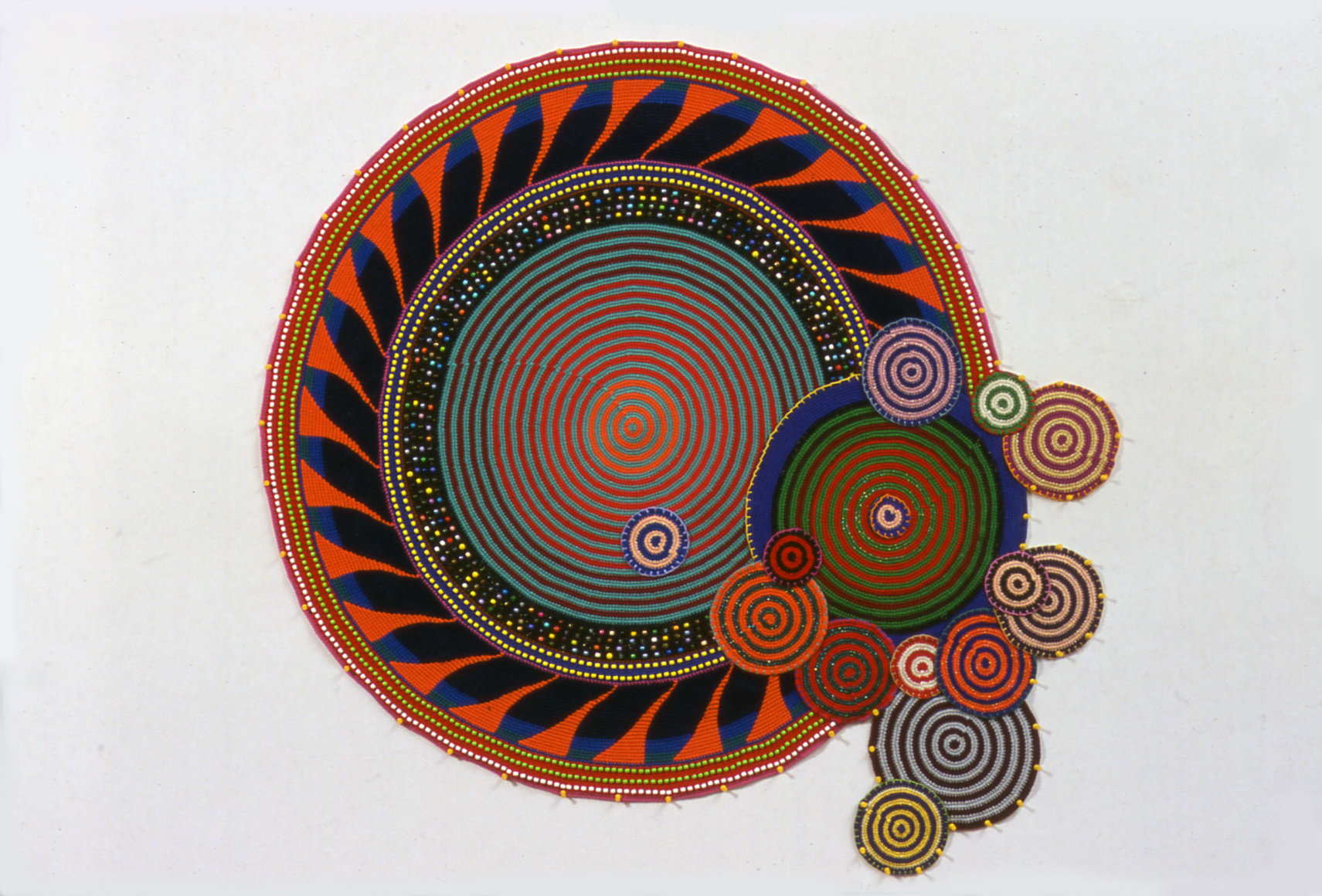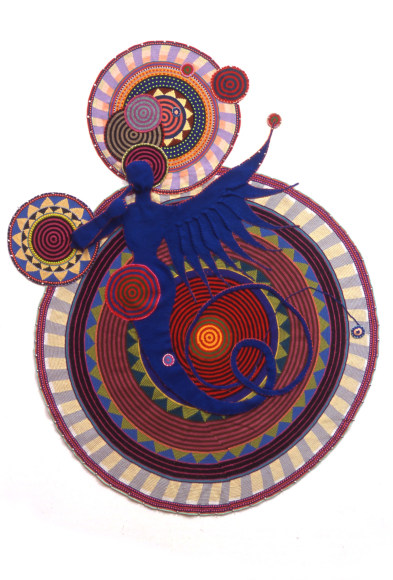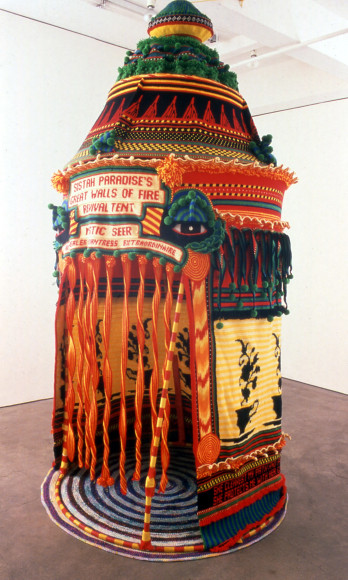Distilling a wide range of influences – including African, Native American, and African-American cultures, art historical precedents, female handicraft, and her own elaborate cosmologies – Xenobia Baileys vibrantly colored crocheted tondos and goddess figures present a holistic view of what art can embody. Following Phase I which took place last fall at The Studio Museum in Harlem, Phase II features more of the folk tales and creation myths, archetypal earth mothers and muses that have been given life through her unique brand of fiber art, incorporating abstraction, embellishment, costume, and sculpture.
Bailey’s handmade wall and floor installations are composed of numerous concentric circles of multicolored yarn, occasionally festooned with beads and cowry shells; spiraling out into optical whorls, they simultaneously offer the formal qualities of pattern and design as well as the boundless energies that spawned our universe. Presiding over the exhibit with her own oracular Revival Tent is Sistah Paradise, a crocheted sculpture standing 9 feet tall, whose mystical, hieratic presence epitomizes a matriarchal cosmic deity. Additional photographs share the artist’s homespun, domesticated interpretations of ceremonial uniforms. By rejoicing in the multiple aesthetics of her cultures, Bailey colorfully unites object and symbol, abstract with the specific, foreign and familiar.



